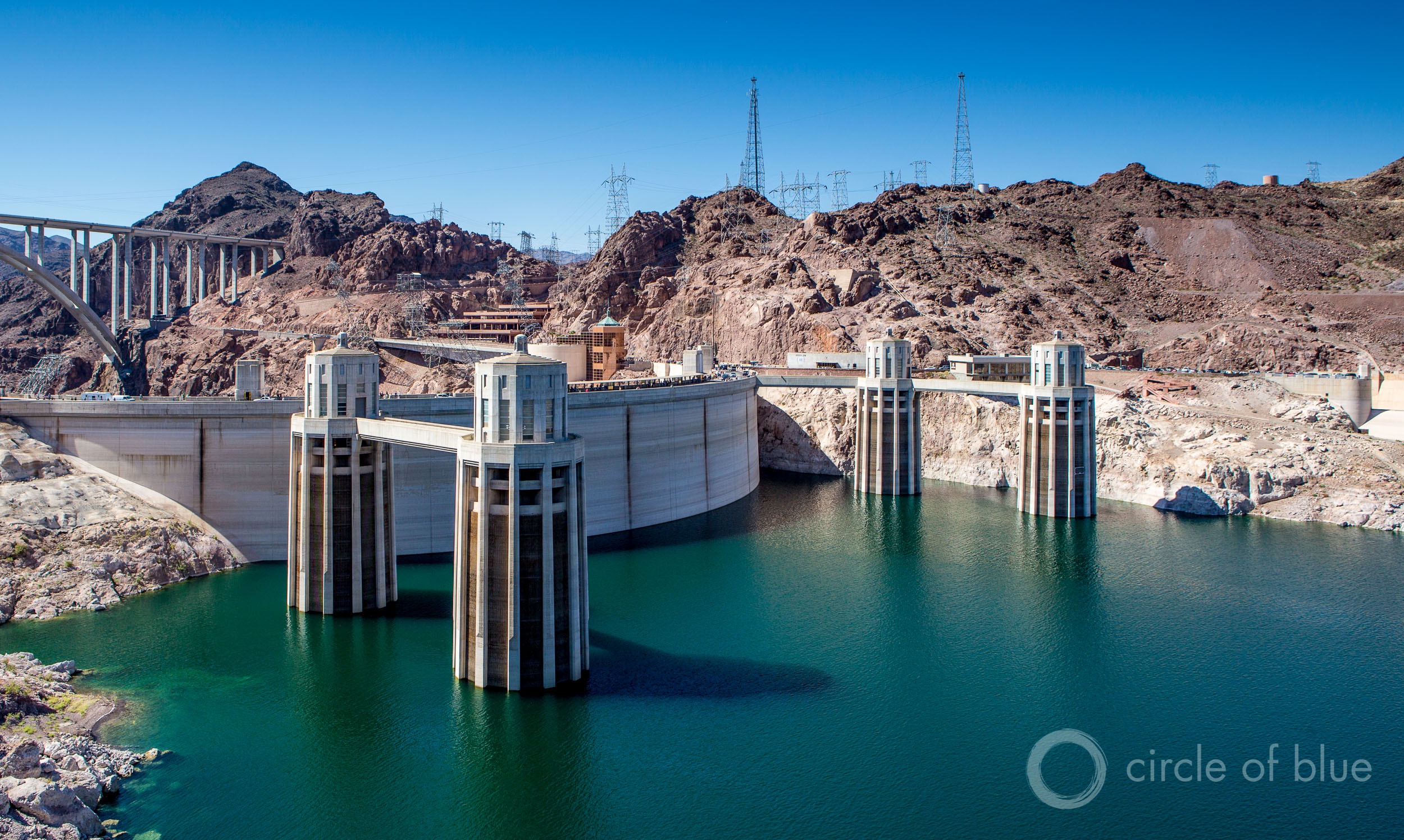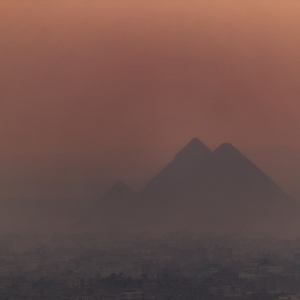The Stream, May 24, 2023: Lower Colorado River States Outline Plan for Historic Water Cuts

Lake Mead, the largest reservoir on the Colorado River. Photo © J. Carl Ganter / Circle of Blue
YOUR GLOBAL RUNDOWN
- Arizona, Nevada, and California offer a plan to conserve water from the shrinking Colorado River.
- More than a dozen people were killed in floods amid extreme rain in northeastern Italy.
- Less than two weeks of water supplies remain in the main reservoir for Montevideo, Uruguay.
- New forecasts reveal that by 2035, if trends continue, Iraq will be able to meet only 15 percent of its water needs.
Toronto’s Don River, declared dead for over a half-century, is on the road to recovery.
“For decades, very few Torontonians believed that this river could be redeemed at all. It was just the price of prosperity, a throwaway kind of sacrificial landscape.” — Jennifer Bonnell, an associate professor of history at Toronto’s York University.
In 1969, the Don River, which winds through Toronto, was pronounced dead — a result of factories using the waterway as a dumping ground for decades, and the city deciding, in the 1860s, to pump its raw sewage directly into the Don’s waters. Unsurprisingly, the river caught fire on “several occasions,” throughout the past century, The Guardian reports.
But beginning in the 1970s, citizen volunteers began fighting for the Don, and they spawned a conservation movement within the city. According to The Guardian, the Task Force to Bring Back the Don “restored wetlands, cleaned its banks, and reduced the city’s use of road salt, which invariably flowed into the river each winter.”
As they celebrated riparian successes, river advocates accomplished two huge feats in recent years, convincing Toronto’s government to pledge financial investments for the Don’s future welfare.
The city invested more than $1 billion Canadian to “to create wetlands, levees and a new route for the Don” — a project that, nearing completion, has already reaped the benefits of beaver, mink, bald eagle, deer and coyote sightings.
The Don’s waters have not rebounded as well. In 2018, the Toronto Regional Conservation Authority found “elevated levels of phosphorus, nutrients, chlorides, salt and E. coli” in the river. Partially to blame is the city’s old infrastructure, which spills runoff and raw sewage into the river during heavy rains. To help eradicate this issue, a $3 billion Canadian investment will be used over the next 15 years to build three tunnels that transport untreated waste away from the Don.
— Christian Thorsberg, Interim Stream Editor
Recent WaterNews from Circle of Blue
- Anishinaabe Tribes Work to Save a Fish Significant to Their Culture and an Important Source of Protein — Commercial fishers are catching fewer whitefish in parts of the Great Lakes. The Anishinaabe people are trying to figure out why.
- Louisiana Becomes First State to Issue Drinking Water Report Cards — Move aims for transparency and to identify struggling water systems.
The Lead
The White House announced on Monday a three-year agreement between Arizona, Nevada, and California to conserve water in the Colorado River, NPR reports.
Water managers in the states will “cut their water use by well over a third of the entire traditional flow of the Colorado River.” Most of these cuts, 2.3 million acre-feet of water, come from irrigation districts, cities, farmers, and Native tribes that “had agreed to take less water in order to qualify for federal grants offered under the 2022 Inflation Reduction Act,” the New York Times reports. The federal government has allotted $1.2 billion to pay these parties for using less water.
These cuts are entirely voluntary from the states. Water reduction proposals put forward by the Biden administration could have resulted in a lawsuit. But good snowpack and atmospheric rivers restoring reservoirs in the West helped seal this short-term deal, which extends through 2026.
Still, experts are wary that this temporary step is only the beginning. A separate negotiation about water-sharing rules after 2026 is also taking place. As the basin dries, more substantial cuts may be necessary.
This Week’s Top Water Stories, Told In Numbers
36
Hours it took parts of northeastern Italy to accumulate “about half” of the region’s average annual rainfall, The New York Times reports. As of Sunday, 14 people had been killed in the floods, and 36,000 people had been evacuated. Many “rivers, streams, and canals overflowed,” the Times reports, and the damage estimate due to destroyed homes and property already is in the billions of euros, per Reuters. Experts attributed the deluge to a “perfect storm” of weather patterns in the area, and they warn that extreme events such as this are the “new normal of climate change” in Europe. As a response to the floods, climate activists turned the waters of Rome’s Trevi Fountain black, a protest against fossil fuels.
10
Days of water supplies remaining in the Canelon Grande reservoir, the main supplier of water for Montevideo, the capital of Uruguay, Reuters reports. Low rainfall and high temperatures have left the capital with its greatest water deficit in 74 years, “affecting supply to thousands of households and leading to poor water quality.” Meanwhile the Paso Severino reservoir, which supports more than half of the country, is at 10 percent capacity. Demonstrations outside the capital are planned for later this week as residents demand government action.
On the Radar
United Nations officials said last week that if trends in Iraq continue, the country will meet only 15 percent of its water demands by 2035, The National News reports. As of today, close to 90 percent of Iraq’s rivers are contaminated, further limiting available clean water, and the nation is listed by the UN as one of the “most affected by climate change, including drought.” By 2050, experts predict, rainfall in Iraq will be only 75 percent of what it is today.
Meanwhile, a report released by the International Committee of the Red Cross and the Norwegian Red Cross last week showed that only $20.6 million in climate funding from the UN, World Bank, and other multilateral funds had been awarded to Iraq, Syria, and Yemen as of January 2022. In March 2023, Iraq became the first Middle Eastern country to join the UN Water Convention.
More Water News
PFAS Inequtiy: A new report shows that Black and Hispanic communities disproportionately make up the 18 million Americans exposed to PFAS levels which exceed EPA standards in their drinking water, Grist reports.
India’s Major Lakes: A new study published in Science shows that India’s 30 largest lakes have experienced “a drying trend” from 1992 through 2020, while 53 percent of lakes around the world have declined, GroundReport reports.
Christian Thorsberg is an environmental writer from Chicago. He is passionate about climate and cultural phenomena that often appear slow or invisible, and he examines these themes in his journalism, poetry, and fiction.







Leave a Reply
Want to join the discussion?Feel free to contribute!